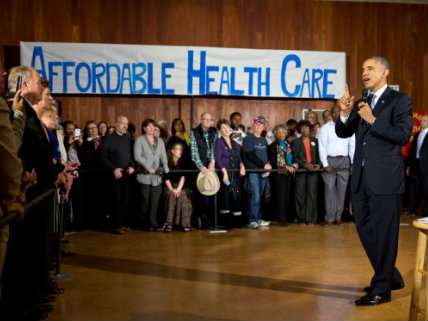More Obamacare Enrollment Data, More Obamacare Enrollment Questions

More than nine months after the start of Obamacare's primary coverage expansion, it's still difficult to discern exactly what its effect was. And new data released today does little to clear up remaining questions.
Multiple surveys so far indicate that millions of people who did not previously have coverage are now insured. But how many were covered directly through the law? And what was the net increase?
A new report from The National Health Interview Survey, an in-home survey taken by federal researchers the National Center for Health Statistics within the Centers for Disease Control, represents the first time the government has attempted to measure the net impact of the law on coverage. The researchers found that the percentage of people who said they lacked insurance at the time of the interview dropped from 14.4 percent in the first quarter of last year to the 13.1 percent this year. That drop indicates that about 3.8 million more people had insurance in the first quarter of this year than in the first quarter of last year, which, as The New York Times notes, is in line with the private tracking polls from Gallup.
But this survey probably doesn't measure the full impact of the law. That's because the survey was conducted from January through March of this year, when Obamacare's open enrollment period was still ongoing. So it wouldn't capture much of the last-minute enrollment surge that accounted for a significant portion of the sign-ups under the law. People who signed-up at the end of March, or in the extended enrollment period in early April, wouldn't have technically been insured for another month or more.
That leaves us with a likely net increase in coverage of several million. But exactly how many is still difficult to say.
Meanwhile, the direct effects of the law, as reported by the administration, continue to be unclear. Through the summer, federal health officials have been working to resolve application discrepancies related to income and citizenship with millions of individuals receiving coverage and subsidies under the law. Citzenship issues were the first priority, and the administration now says that about 115,000 people may end up having their coverage revoked because they have not provided adequate proof of citzenship.
Many more people who signed up also had income-related issues potentially affecting subsidy eligibility. At the end of May, about 1.2 million households, or 1.6 million individuals, had income-related discrepancies. According to a memo sent from the Centers for Medicare and Medicaid Services (CMS) yesterday, about 467,000 of those have been "closed" and about 430,000 are "currently in the process of being resolved."
That leaves 279,000 households, or about 363,000 people, who could lose their subsidies if they don't send in additional paperwork to verify their incomes before September 30.
If that happens, their coverage won't immediately be cancelled. But it's likely that with the subsidy gone, many would drop the coverage they had.
It's possible that many have already lost their subsidies. The CMS memo notes how many cases have been closed, and how many are being resolved. But it doesn't provide any information at all about how those cases were resolved. That's a departure from when the discrepancies were first revealed in June. At the time, as CBS News reported, federal health officials stressed that consumers were coming out ahead in the "vast majority" of resolved cases. It seems probable some portion of the resolutions since, and perhaps even a significant fraction, were resolved with the subsidies being taken away.


Show Comments (23)